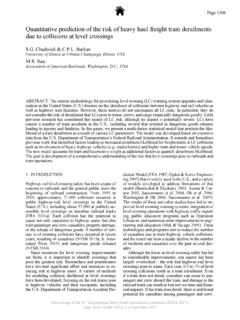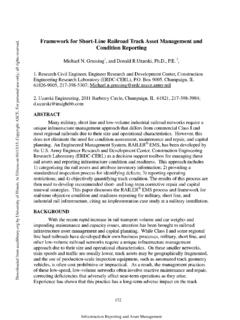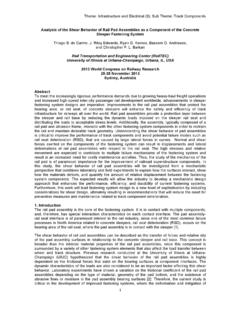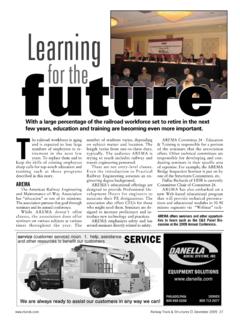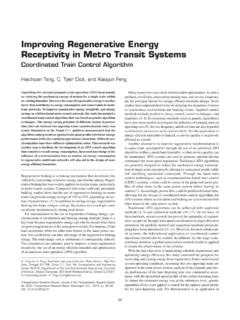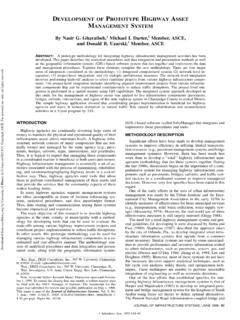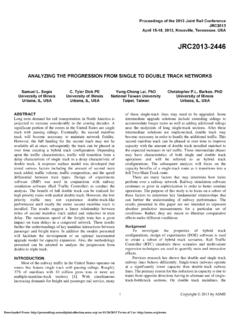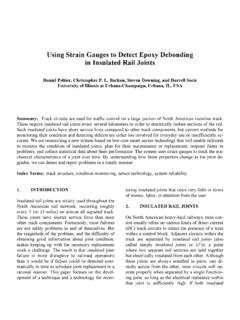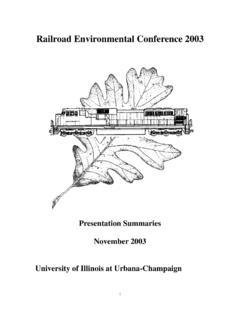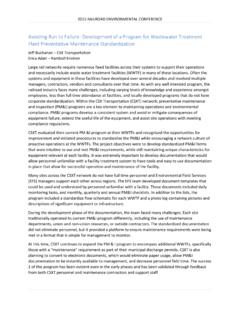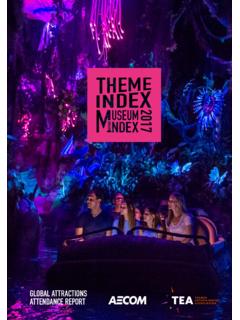Transcription of Norfolk Southern Sustainable Remediation Program – Tiers ...
1 2015 RAILROAD ENVIRONMENTAL CONFERENCE Norfolk Southern Sustainable Remediation Program Tiers , Tools & Tests Amanda Dianne McNally & Dave Woodward AECOM Scott Pittenger Norfolk Southern Railway Site Remediation activities often have significant environmental impacts including air emissions, landfilling, and water, energy, and resource utilization. Often, other factors such as community disturbances, local job creation, and future land use should also be considered when selecting, designing, or implementing a remedial approach. Sustainable Remediation (SR) has emerged as an innovative approach to rehabilitate a contaminated site, ensuring Remediation goals are met, while seeking to balance the environmental, social, and economic impacts of the Remediation processes themselves.
2 Norfolk Southern Railway Company (NSRC) has developed a corporate GSR Program for implementation across the company s portfolio of environmentally impacted sites. NSRC recognizes that the use of SR approaches throughout the Remediation life cycle ( from investigation through site closure) is likely to reduce impacts to the surrounding communities, minimize consumption of resources, and reduce overall Program costs. The SR Program is intended to be applicable across NSRC s portfolio of sites, including emergency/rapid response, traditional environmental investigation and Remediation , and ongoing operations, such as waste water treatment associated with remedial actions. The SR Program is currently in its second phase of development.
3 To date, NSRC has a draft guidance document that summarizes NSRC s approach to SR, including overall Program objectives and metrics, and provides tools and resources to NSRC s contractors for implementation. This presentation will focus on the later stages of development, including: Tiers : NSRC s SR Program incorporates a tiered approach whereby the type of SR evaluation conducted for a given site is determined by the project team based on complexity of the site and the Remediation stage of the project. Tools: In order to conduct SR Evaluations and track metrics, NSRC has incorporated the use of SiteWise into its SR Program . For evaluation of best management practices (BMPs), NSRC has incorporated AECOM s GSRxTM, a checklist tool that provides users with a series of BMPs applicable to different project stages and sustainability considerations ( , environment, social, economics).
4 These tools will be used both in comparison of remedial alternatives and in the tracking of metric during project implementation. Finally, a reporting tool will be developed for input and roll-up of metrics to evaluate overall performance of the SR Program . Tests: During the last phase of development, NSRC will test the SR guidance document and tools on selected representative projects and get feedback from project managers on the ease of use, application of the tools to different project phases, and suggested modifications to the guidance document prior to rollout across NSRC s Remediation portfolio. The presentation will conclude with lessons learned during development of NSRC s SR Program and the value of the SR Program to NSRC.
5
